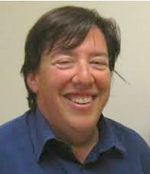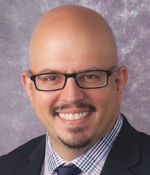Asymposium today will look at emerging concepts in pulmonary vascular disease related to blood disorders, transfusion-associated cardiopulmonary complications, acute lung injury, and sepsis. “Red, White, and Blood: The Heme-Pulmonary Circulation Axis of Inflammation, Injury, and Hemolysis” will be presented from 2 to 4:30 p.m. in Ballroom D (Upper Level) San Diego Convention Center.
The goal of the program is to help participants improve their ability to diagnose and treat pulmonary complications of sickle cell disease and transfusion-related complications, and understand the potential role of transfusions in worsening outcomes of patients with sepsis and ARDS.

Liz Klings
“We thought it would be good to bring together people from different disciplines who are studying fairly similar concepts and present both the clinical and translational standpoints of these diseases,” says Liz Klings, MD, associate professor of medicine at Boston University School of Medicine and director of the pulmonary hypertension inpatient and education program at Boston Medical Center.
Dr. Klings is co-chair with University of Pittsburgh faculty members Michael Risbano, MD, MA, assistant professor of medicine, and Janet Lee, MD, associate professor of medicine.
The symposium is sponsored by the ATS Assemblies on Pulmonary Circulation; Allergy, Immunology, and Inflammation; Clinical Problems; Critical Care; and Respiratory Cell and Molecular Biology.

Michael Risbano
Dr. Risbano will kick off the program with a discussion on “Breaking Bad … Blood,” in which he will focus on the transfusion storage lesion, what happens to blood when it is stored too long prior to transfusion, and the impact that has on blood flow post-transfusion.
During “The Age of Blood Evaluation (ABLE) Randomized Controlled Trial,” Jacque Lacroix, MD, professor of pediatrics at the University of Montreal, will present information about this trial, which looked at the age of blood and the impact of transfusing old blood.
Roberto Machado, MD, associate professor of medicine at the University of Illinois, Chicago, will then present “Hemolysis and Inflammation in Sickle Cell Lung Disease.” He will focus on two entities within sickle cell disease—pulmonary hypertension and acute chest syndrome—and reflect on the ATS Clinical Practice Guideline: Diagnosis, Risk Stratification, and Management of Pulmonary Hypertension of Sickle Cell Disease, for which he and Dr. Klings are co-first authors.
Dr. Lee, who has an interest in red blood cell transfusion and its relationship with the development of acute lung injury, will present “Red Cell Microparticles in Lung Inflammation and Injury.”
Daryl Kor, MD, associate professor of anesthesiology at the Mayo Clinic, Rochester, MN, will discuss “Pulmonary Complications of Transfusion: Towards a Greater Understanding of TRALI and TACO.”
“He will give attendees a better understanding of the clinical and translational aspects of transfusion-associated lung injury,” Dr. Risbano says.
Eldad Hod, MD, assistant professor of pathology and cell biology at Columbia University, New York, will present “The Role of Non-Transferrin Bound Iron as an Inflammatory Modulator.”
“There has been a lot of investigation into the role that cell-free hemoglobin plays as a toxic agent, but we wanted to hear a bit more specifically about how iron modulates inflammation within the vasculature, partly because it contributes to the toxicity of cell-free hemoglobin,” Dr. Klings says.
Lorraine Ware, MD, associate professor of medicine at Vanderbilt University, Nashville, will focus her talk on “Hemolysis in ARDS.” Dr. Risbano notes that Dr. Ware’s work in ARDS includes how the heme scavengers haptoglobin and hemopexin may protect patients from the development of acute lung injury.
Dr. Klings will conclude the symposium by bringing all the talks together, noting that “these diseases and conditions are more similar than different, and there needs to be more collaboration among investigators from different backgrounds to open up avenues for research and clinical work,” she says.
“Red, White, and Blood: The Heme-Pulmonary Circulation Axis of Inflammation, Injury, and Hemolysis” is supported by an educational grant from Bayer HealthCare.
